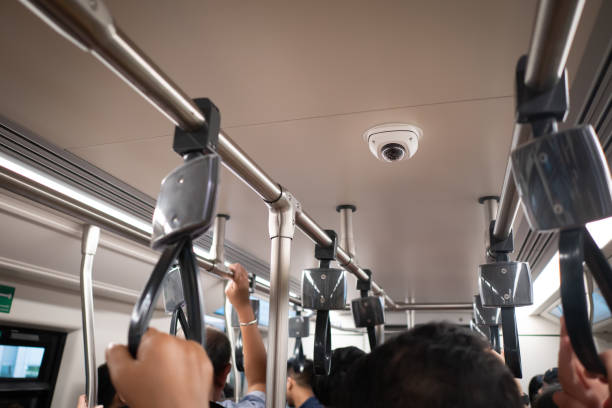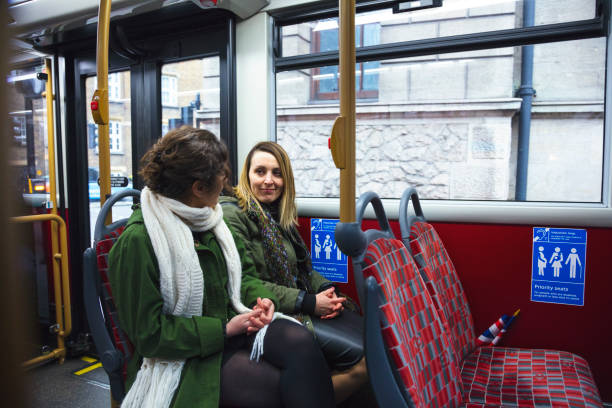The safety and security of operators, passengers, and vehicles have become paramount in the modern transportation industry, and CCTV kits facilitate this. According to research by CCTV.co.uk, the total number of CCTV cameras in London was 691,000 in 2020/21. That is approximately 1 for every 13 people.
CCTV (Closed-Circuit Television) systems enable monitoring of the live activities in and outside the vehicle. While helping to curb criminal activities, this technology also allows managers to investigate incidents whenever they occur in real time.
The multiple varieties and brands of CCTV kits and security cameras make it possible to find the one that best suits your needs. This guide will show you the key considerations when choosing your CCTV system for your bus fleet.
Understanding CCTV Kits
CCTV systems are designed to capture and transmit video footage from strategically placed cameras to a central monitoring station or recording device.
In the transportation ecosystem, surveillance systems have evolved to offer advanced features tailored to the needs of specific buses, coaches, and their operators.
CCTV kits typically consist of cameras, a recording device, and a monitoring station, which makes it possible to:
- Watch live videos to respond quickly to issues,
- Record videos to review incidents later,
- Connect to GPS and vehicle data for better operations.
New surveillance CCTV systems offer more benefits such as:
- High-quality cameras for clear pictures,
- Wide-view cameras to cover more areas and
- Intelligent features to improve security and fleet management.

CCTV kits help to maintain public safety in crowded buses
Types of CCTV Kits
CCTV systems can be categorised into:
- Analog: Analog cameras transmit video signals over coaxial cables to a digital video recorder (DVR).
- IP (Internet Protocol): On the other hand, IP cameras capture digital video and transmit it over a network to a network video recorder (NVR). Wired systems rely on physical cables for power and data transmission, while wireless systems use Wi-Fi or cellular networks.
- AHD (Analog High Definition): AHD cameras offer higher-definition video signals than analog cameras. They still use traditional coaxial cables and require a DVR for recording. You can consider them a middle ground between analog and IP systems.
The table below shows the pros and cons of choosing a CCTV system.
| Feature | Analog Camera | IP Camera | AHD Camera |
| Cost | Least expensive | Most expensive | Mid-range |
| Video Quality | Lowest Resolution | Highest Resolution | Improved Resolution but not as high as IP |
| Scalability | Limited | Easiest | Moderately complex |
| Installation | More complex: each camera requires a dedicated coaxial cable. | Easiest: can use existing network infrastructure. | Moderately complex: can existing coaxial cabling if compatible. |
When selecting a CCTV system, factor in your budget, existing infrastructure, video quality, and possible future expansion plans. To get expert advice on choosing a CCTV system that is tailored to your needs and resources, send an email to enquiries@sure24.co.uk.
Key Considerations
Choosing suitable CCTV kits for your bus fleet is essential to ensure you get the best value for investment. Here are some important factors to consider when making your decision:
- Camera Types, Bus Size, and Layout: The number and type of cameras you need depends on the size and layout of your buses. Single-decker buses may need fewer cameras as compared to double-deckers. Wide-angle cameras can cover more area, but you might also need some narrow-view cameras for specific spots. Depending on your requirements, you can select from several camera options for your SURE Kit here.
- Camera Placement and Areas of Focus: What areas would you like to focus the surveillance on? Will you need to monitor the vehicle’s inside, outside, or both? This will determine whether you will include outdoor security cameras as well. Identify the critical areas of the bus you need surveillance on. These could be entry or exit points or even baggage compartments. Where you position the cameras is very important, as they should provide full coverage of the bus interior, entrances, and exterior areas without any blind spots.
- Environmental Conditions: Durability is another critical factor. Will the cameras be exposed to vibration, temperature fluctuations, and potentially harsh weather conditions? Choose cameras designed for mobile surveillance applications and tested to withstand these challenges.
- High-Resolution Cameras: High-resolution cameras with wide-angle lenses are essential for capturing clear, detailed footage useful for incident investigation and evidence gathering. SURE Solutions offers camera resolutions, including 720p, 1080p, and 4MP 2K options. Additionally, our systems provide excellent low-light sensitivity, ensuring clear footage even in difficult lighting conditions.
- Audio Recordings: Audio recording capabilities can provide valuable context to video footage, helping to resolve disputes or provide evidence in investigations. However, be aware of legal considerations and ensure compliance with local regulations regarding audio recording. Sure Solutions offers surveillance kits with high-quality microphone input for some models. Browse through our selection to find a kit that meets your specific needs.
- Storage: Regarding storage, you will decide between local storage (e.g., onboard hard drives or SD cards) and cloud-based solutions, or both. Local storage offers high capacity and can be more cost-effective, while cloud storage provides remote access and reduces the risk of data loss. Sure Solutions offers local storage via hard drives and cloud storage solutions to meet your needs. SURE Kits can provide up to 4TB HDD cartridges and 512Gb Removable SD cards for Primary and Secondary storage.
- Integrations: Integrating your CCTV kits with other onboard technologies, such as GPS and vehicle telemetry, will significantly enhance its functionality. This allows you to synchronise video footage with location data, speed, and other relevant information, providing a comprehensive view of incidents. All SURE Kits have built-in GPS, wifi, and 4G. SURE Solutions also provides data reporting and analytics that include route capacity planning, live occupancy count, passenger boarding and alighting matched with GPS location and Time/Date, and many others. Download a free brochure here.

Security cameras give passengers and operators a sense of safety
Installation and Maintenance
Having professionals install the system is best. This prevents issues that could stop the system from working correctly.
Keeping the system maintained is just as important. Maintenance on a schedule helps catch problems early before they worsen and cause downtime.
SURE Service provides hands-free, fully managed 24/7 fault identification and rectification service that ensures your CCTV system is always fully operational.
Maximising Benefits
Real-time monitoring with your CCTV system allows for quick incident response and serves as a reliable witness for post-incident analysis.
Our CCTV systems also integrate GPS and telematics data to provide insights into driver behaviour, route efficiency, and vehicle maintenance needs. Contact SURE Solutions for a quote on CCTV installation.
Conclusion
A well-designed CCTV system enhances fleet security, protects assets, and promotes operational efficiency.
The factors outlined in this guide will help you choose the CCTV solution that best meets your needs. Visit our website to explore our wide range of high-quality CCTV solutions, or send an email to enquiries@sure24.co.uk for expert advice on choosing a CCTV system today.






























